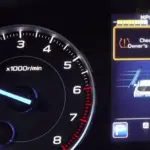What Do Brake Pads Look Like?
Ah, brake pads! Those unsung heroes of our daily commutes, nestled in the mysterious depths of our car’s wheels. If you’ve ever wondered, “What on earth do these elusive brake pads look like?” then buckle up, my friend. You’re about to embark on a comically detailed exploration of these essential, but often overlooked, components of our vehicular companions.
January 31, 2024
Table of ContentsShow
Introduction to the World of Brake Pads
Before we dive into the nitty-gritty, let’s set the stage. Brake pads are a vital part of your car’s braking system. They are like the quiet, dependable friend in every group that doesn’t seek attention but always has your back. In the world of fast-moving metal boxes (a.k.a. cars), they’re the unsung heroes keeping us from re-enacting our favorite action movie stunts on the highway.
Understanding the Basics
- Role: Their job is simple yet crucial – applying pressure and friction to your car’s brake rotors, slowing down your chariot on command.
- Location: Tucked away behind each wheel, these pads are like secret agents working tirelessly to keep you safe.
The Great Reveal: What Do They Actually Look Like?
Imagine a small, rectangular object, roughly the size of your smartphone but much thicker. This compact, chunky little block is usually made from a high-friction material. It’s like your car’s version of a superhero cape – small but mighty!
Diving Deeper: The Anatomy of a Brake Pad
Now, let’s get into the specifics. A brake pad has several parts, each with its own superhero role in the grand scheme of stopping your car.
The Friction Material
This is the part that gets down and dirty. It’s the material that presses against the brake rotor. Over time, it wears down – kind of like how your patience thins when stuck in traffic.
The Backing Plate
This unsung hero holds the friction material. It’s like the stage crew of a theater – out of sight but crucial for the performance.
Shims, Slots, and Chamfers, Oh My!
These little additions help reduce noise and improve the pad’s lifespan. They’re the unsung background singers to the lead vocalist that is the friction material.
Types of Brake Pads
Just when you thought brake pads couldn’t get more exciting, they come in different varieties. It’s like walking into a candy store, but for your car.
Organic Brake Pads:
- Composition: Made from materials like rubber, glass, and Kevlar.
- Pros: Quiet and eco-friendly, like a librarian who cares about the planet.
- Cons: Wear out faster, especially if you’re a fan of spirited driving.
Semi-Metallic Brake Pads:
- Composition: A mix of metal and other materials.
- Pros: Durable and excellent for heat dissipation.
- Cons: A bit noisier and harder on brake rotors than their organic cousins.
Ceramic Brake Pads:
- Composition: Made from ceramic fibers and other filler materials.
- Pros: Quiet, less dust, and gentle on rotors.
- Cons: Pricier – think of them as the gourmet chocolate of brake pads.
The Life and Times of a Brake Pad
Wear and Tear: A Drama in Several Acts
Brake pads don’t last forever. Like the soles of your favorite running shoes, they wear down over time. Factors influencing their lifespan include driving habits (are you a gentle braker or a stop-on-a-dime kind of person?), environment (city driving with frequent stops versus open highway cruising), and the type of pad material.
Spotting the Signs of Wear
Visual Check:
If the friction material is thinner than the thickness of a nickel, it’s time for a change.
The Squealing Choir:
When you hear a high-pitched squeal, that’s your brake pads’ built-in alarm system saying, “Change us, please!”
Conclusion: A Tribute to the Humble Brake Pad
In the end, brake pads may not be the flashiest part of your car, but they’re essential for your safety. They’re like the unsung background singers in the grand concert of your car’s performance – not always in the spotlight, but the music wouldn’t be the same without them. So next time you press that brake pedal and come to a smooth, safe stop, take a moment to appreciate the small, unassuming pieces of technology that made it possible. After all, without them, we’d all be in a much stickier (and crashier) situation!


